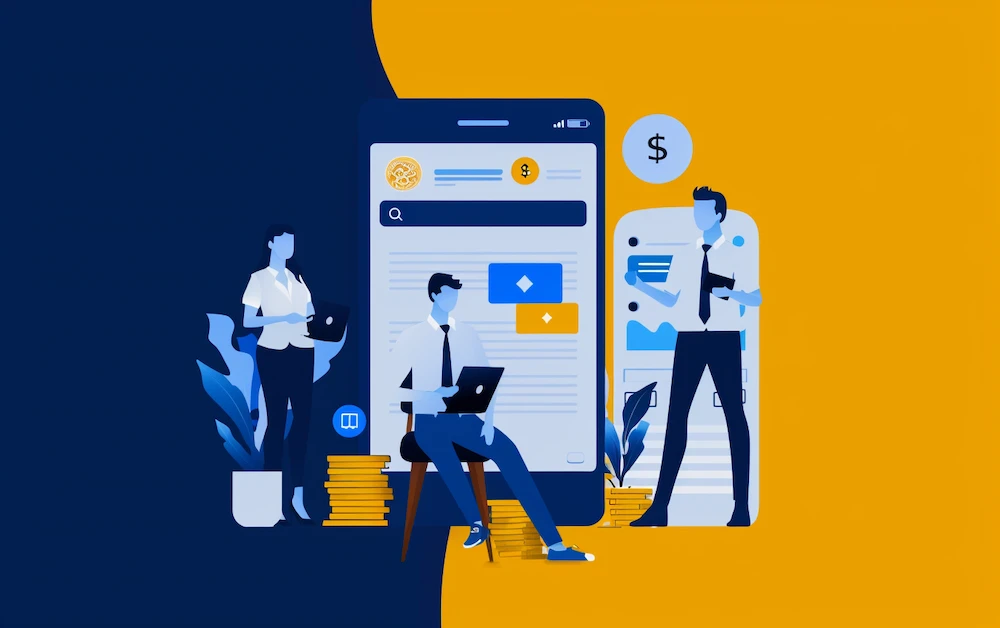Top 5 Best Treasury Reconciliation Software

The Fund Balance with Treasury (FBWT) is an asset account which depicts the current budget spending of federal agencies. Treasury reconciliation software is used to ensure that the amount reflected in this important account is accurate and up-to-date, which is critical for compliance and decision-making.
We’re going to take a look at the best reconciliation software so you know which reconciliation tools are the best of the bunch to utilize.
Coming Up
What is the Best Treasury Reconciliation Software?
Let’s dive right in with our top picks for the best treasury reconciliation software. Then, we’ll explore what makes a treasury reconciliation tool great.
1. Solvexia
Solvexia is a finance automation software that removes the dependence on spreadsheet-driven data and automates manual processes.
Features
- Enterprise-Grade Automation: Data processing, reporting, audit trails, and more.
- Data Integration: Pulls information from general ledgers, banks, suppliers, etc., for quick reconciliation.
- Complex Data Matching: Handles data in any format with accurate matching.
- Cloud-Based: The cloud-based solution makes it easy to deploy and manage.
- Flexibility: Solvexia provides data transformation and enrichment capabilities on top of its automation features.
- More than Reconciliation: Solvexia performs transaction matching and completes reconciliation in minutes, but it also can do much more, such as: rebate management, expense management, regulatory reporting, APRA reporting, etc.
Pros
- Customizable: Easily customize reports and dashboards according to stakeholders’ needs.
- Analytics: Solvexia provides real-time analytics to aid in providing insights.
- Matching Rules: The software can handle complex matching rules, including one-to-one and one-to-many.
- Integrations: Solvexia integrates with existing systems, including legacy systems.
- Ease-of-Use: With drag-and-drop functionality, along with pre-built templates, it’s simple for anyone to design workflows and begin automating critical processes.
Cons:
- Setup: May require initial setup time to configure workflows
2. Xero
Xero is accounting software that is considered to be well-suited for small businesses. It is a web-based accounting solution.
Features
- Cloud-Based: Without any need for downloads or install, Xero operates in the cloud, which makes it possible to access from anywhere with an Internet connection. This feature is particularly desirable for those working remotely or from different office locations.
- Real-Time Bank Feeds: Xero integrates with banks, which enables the synchronization of data in real-time.
- Mobile Expense Management: Another flexible feature is its mobile expense management solution, which provides receipt review and approvals on-the-go. This makes it simple for employees who wish to submit expense reports as they incur them, so nothing gets missed and no receipts risk the chance of being lost.
- Billing and Invoicing: You can automate accounts payable and accounts receivable processes.
Pros
- Scalability: Although many small businesses turn to Xero, it can be scalable as your business grows.
- Reporting: With access to analytics and reporting, users get to gain insights and easy-to-digest tidbits of information with its reporting functionality.
- Unlimited Users: To empower collaboration, Xero allows for an unlimited number of users, making teamwork hassle-free.
Cons
- Learning Curve: Xero is simple to get up-and-running as it is cloud-based and web-based. However, substantial training is required to understand how to use all of its features.
- Limited Features: That being said, its range of features do depend on the chosen plan. For example, expense claims and multi-currency support is only available on the highest paid plan.
- Pricing: Be sure to check all the features based on each plan tier before getting started because you could find you need more than you thought, which can add to the cost.
3. QuickBooks
QuickBooks, by Intuit, is an accounting software with reconciliation functionality.
Features
- Customizable Reports: The software allows for customizable reports to be designed and generated.
- Mobile Accessibility: With a well-designed mobile app, QuickBooks can be accessed anywhere on-the-go.
- Accounting Features: QuickBooks covers all the main accounting features, which is why it is a favorite amongst bookkeepers and accountants alike. Functions include: payroll, inventory, invoicing, expense tracking, reconciliation, accounts payable, accounts receivable, etc.
Pros
- Client Portal: The software offers an online client portal so that clients can access invoices and get in touch should there be any concern. This helps to streamline payment processes and communication.
- Integrations: For seamless interaction between applications and systems, QuickBooks integrates with third-party apps and plugins.
- Business Reporting: QuickBooks provides real-top reporting and business dashboards, with customization capabilities.
Cons
- Several Limitations: Users run into limitations when it comes to file sizes and the number of users, as well as specific reports since QuickBooks is mainly focused on accounting.
- Usability: QuickBooks may take some time to set up and learn, as well as customize, which can cause timing delays.
- Support: Most users report that they must rely on forums and online assistance rather than direct report.
4. Modern Treasury
Modern Treasury is an automatic reconciliation platform, powered by AI.
Features
- Real-time reconciliation: The automation functionality saves time and reduces errors.
- User-Friendly Interface: Users report that the interface is intuitive and easy-to-use.
Pros
- Pre-Built Connectivity: Pre-built integrations and APIs make it easy to connect Modern Treasury to existing systems.
- Enterprise-Grade Security: The platform is compliant with RBAC, SSO, SCIM, SOC I, SOC II, PCI DSS, and SIEM.
Cons
- EP Reconciliation Limitations: May be hard to reconcile checks to EPs as users cannot reconcile multiple checks to one EP and vice versa.
5. BlackLine
BlackLine is financial close software that primarily works with mid and large-sized businesses.
Features
- Task Management: Offering a dashboard to centralize tasks, users can manage accounting tasks with accountability.
- Automated Reconciliation: BlackLine is popular for its financial close functions, including automated reconciliation.
- Multi-Currency Support: The software knows how to handle various geographies and currency with ease.
Pros
- Internal Control: Users report an improvement in internal control with the ability to set matching rules and increase visibility into their processes.
- Solid Support: Reliable customer support is available.
Cons
- Difficulties for Departments: Outside of the finance department, teams may struggle to understand how to use the reporting features.
What Makes a Great Treasury Reconciliation Tool?
Selecting the right tool for your business requires a fair share of research, but knowing what to look out for makes it a simpler task. The best treasury reconciliation tools include:
1. Customization
Every business has their own set of matching rules, reports needed, and specific requirements. As such, the software should be able to be customized accordingly.
2. Automation
The goal of reconciliation software is to streamline the process, save time, and reduce errors. The best solutions automate the process as much as possible, removing the need for manual intervention and thereby reducing errors.
3. Security
Given that the software is handling sensitive, financial data, top-notch security is non-negotiable.
4. Reporting
Reporting is another important consideration, offering insights into the financial close process, budgeting and forecasting, and the company’s overall financial well-being.
What are the Features of Treasury Reconciliation Software?
Treasury reconciliation software should consist of the following features and be able to:
- Calculate outstanding checks
- Reconcile bank statements
- Define and customize matching rules
- Export results
- Provide reports and audit trails
- Identify exceptions
- Classify transactions
- Import various file types and connect to existing systems
- Provide dynamic dashboards
What are the Benefits of Treasury Reconciliation Software?
Automating finance functions and using treasury reconciliation software brings a lot of advantages to any business.
Since the reconciliation process happens at least once a month in an ideal world (and in many cases, much more often than that), any improvement in the process will lead to great positive outcomes.
Treasury reconciliation software is able to deliver:
1. Time Savings
Rather than reconciliation taking days or weeks to complete, treasury reconciliation software can perform transaction matching in minutes. As a result, your accounting and finance team has more time to spend on strategic responsibilities and value-add tasks.
With treasury reconciliation software like Solvexia, for example, you can speed up your manual process by 85x, while reducing data errors by 90%.
2. Error Reduction
Manual errors are inescapable, especially when dealing with a high volume of transactions, systems, and spreadsheets.
This is particularly critical if you use a high number of payment providers such as Amazon, ebay, Worldpay, Stripe etc, where you might have a high volume of low value transactions and can’t keep up with reconciling them all. Automation removes errors from the picture.
3. Risk Mitigation
By complying with accounting standards and principles, while reducing errors, your business benefits from risk mitigation and adherence to regulations.
Wrap Up
Before you read this, you probably were already aware that treasury reconciliation software could only benefit your business, which is why you’re looking for the right solution.
After reviewing the various features, time savings, and advantages that could be had, it’s now time to get started using automation software in your business. As soon as you do, you will undoubtedly realize the upsides.
Want to see a treasury reconciliation tool like Solvexia in action? Click here to see a demo!
FAQ
Intelligent reconciliation solution
Intelligent rebate management solution
Intelligent financial automation solution
Intelligent Financial Automation Solution
Intelligent financial automation solution
Intelligent financial automation solution
Intelligent financial automation solution
Intelligent financial automation solution
Intelligent regulatory reporting solution
Free up time and reduce errors
Recommended for you

Request a Demo
Book a 30-minute call to see how our intelligent software can give you more insights and control over your data and reporting.

Reconciliation Data Sheet
Download our data sheet to learn how to automate your reconciliations for increased accuracy, speed and control.

Regulatory Reporting Data Sheet
Download our data sheet to learn how you can prepare, validate and submit regulatory returns 10x faster with automation.

Financial Automation Data Sheet
Download our data sheet to learn how you can run your processes up to 100x faster and with 98% fewer errors.

Financial Automation Data Sheet
Download our data sheet to learn how you can run your processes up to 100x faster and with 98% fewer errors.

Financial Automation Data Sheet
Download our data sheet to learn how you can run your processes up to 100x faster and with 98% fewer errors.

Financial Automation Data Sheet
Download our data sheet to learn how you can run your processes up to 100x faster and with 98% fewer errors.

Financial Automation Data Sheet
Download our data sheet to learn how you can run your processes up to 100x faster and with 98% fewer errors.

Financial Automation Data Sheet
Download our data sheet to learn how you can run your processes up to 100x faster and with 98% fewer errors.

Rebate Management Data Sheet
Download our data sheet to learn how you can manage complex vendor and customer rebates and commission reporting at scale.

Top 10 Automation Challenges for CFOs
Learn how you can avoid and overcome the biggest challenges facing CFOs who want to automate.
.svg)



